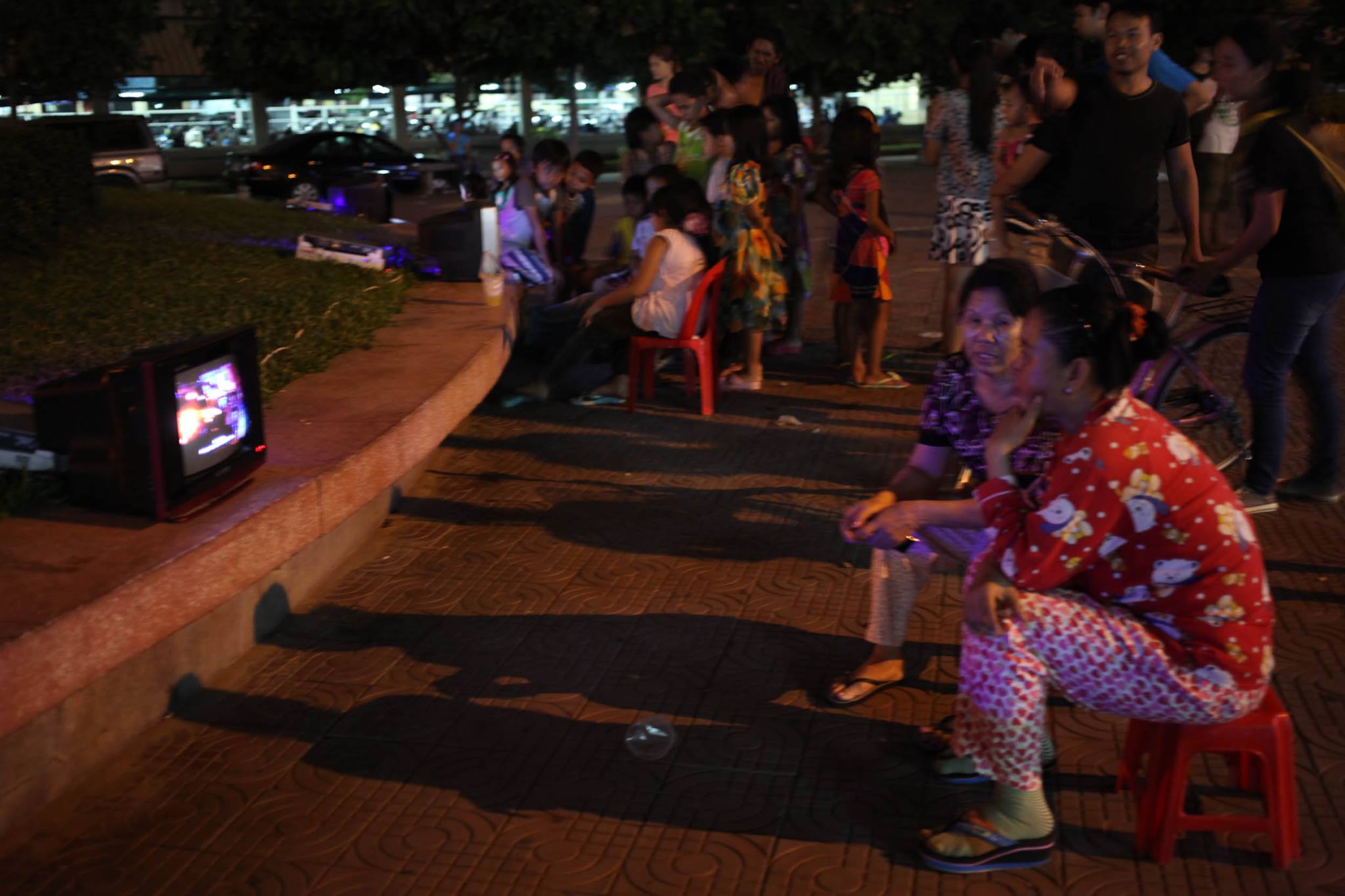Lyno Vuth: Curating as mediating agency
WG 404, AUT University, 6pm.
23 May 2016 - 1 January 2015

Audience viewing video screening on small TVs in a park next to the White Building as part of Sa Sa Art Projects public events, 2014.
This talk presents Sa Sa Art Projects as an experimental model that shuttles between art practice, pedagogy, curating and organising, responding to the cultural, social and political context of Cambodia. Founded by Stiev Selapak collective in 2010, Sa Sa Art Projects (currently the only not-for-profit artist-run space in Phnom Penh) operates from a 1960s residential complex named the White Building. It fosters an ongoing series of community based actions through engagement and collaboration with artists and other creative practitioners, students, and the White Building residents. In doing so, Sa Sa Art Projects mediates and circulates the agency of meaning production among those involved. This is manifest in events that infuse and disrupt communal spaces in the White Building neighbourhood. The talk also introduces other works by Lyno, including Thoamada, which involves portraiture of Cambodian LGBT families.
VUTH Lyno is an artist, curator and artistic director of Sa Sa Art Projects, Phnom Penh’s only artist-run space. A founding member of the Stiev Selapak art collective, he is also co-founder of SA SA BASSAC gallery and reading room. Recent exhibitions include South by Southeast, Guangdong Times Museum, Guangzhou (2016) and Osage Gallery, Hong Kong (2015); and Family Snaps: Photography in Southeast Asia, Chiang Mai City Arts and Cultural Centre (2014). Curatorial projects include Poetic Topographies, SA SA BASSAC, Phnom Penh (2016); Oscillation, the Art Center of Chulalongkorn University, Bangkok (2016); Traversing Expanses, SA SA BASSAC, Phnom Penh (2014); and the Cambodian Youth Arts Festival (2012). Lyno is a co-founder of Art History Forum with Roger Nelson. His writing has been published in journals including Udaya: Journal of Khmer Studies and Trans Asia Photography Review, for which he is also an editorial board member. He holds a Master of Art History from the State University of New York in Binghamton, supported by Fulbright fellowship.
This lecture is presented as part of Curatorial Strategies, MA in Arts Management, AUT.